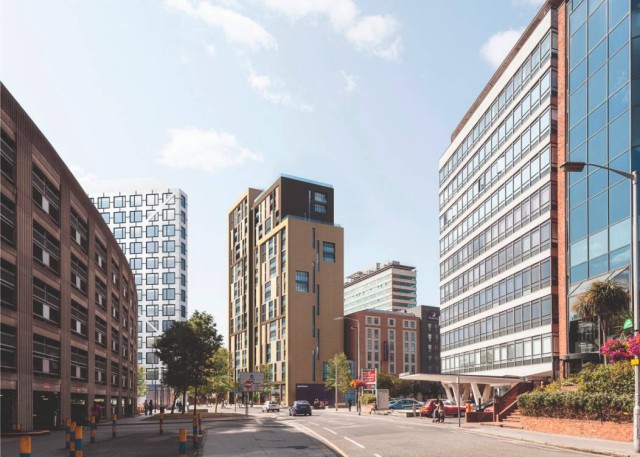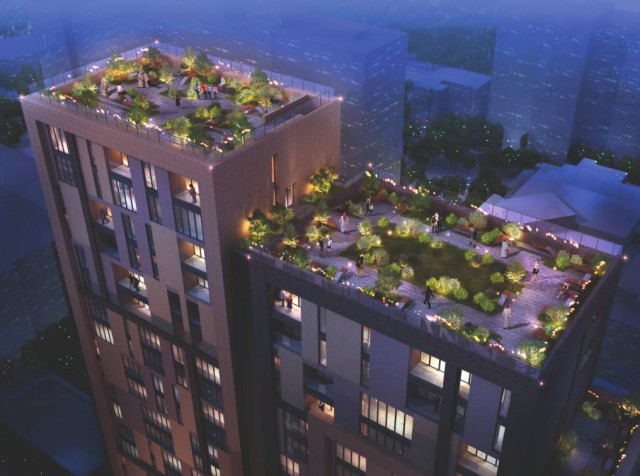The importance of flexible system design for the future of multi occupancy dwellings

Gary Perry, Managing Director at Altecnic, explores how beneficial component flexibility, through the design, installation, and maintenance processes, can be for multi occupancy dwellings, and discusses how a water meter valve assembly is often the most ideal component for any water system serving multiple dwellings.
Water flow, control and monitoring is a key priority for water system design in multiple occupancy dwellings from design through to maintenance. Due to this often being highly complicated, designers, contractors and installers have much to consider when making recommendations and selecting components for them.
Issues that can occur with current water system designs
Water systems in multiple occupancy buildings present a unique set of challenges for a designer, with issues to consider such as design compliance, water hammer, potential leaks, pipe freezing, access to servicing points, pipe configuration, and the complexity of the install itself. Due to this, designers must seek out components which reduce the impact of these issues, make compliance to regulations easier, and optimise the water supply for each self-contained apartment.
With regard to compliance, the Water Supply (Water Fitting) Regulations 1999, require that each self-contained apartment in a multi-occupancy building be supplied with a stop valve and suitable backflow prevention device, such as a single or double check valve, or other no less effective back flow prevention device, according to the level of risk as judged by the water undertaker. In addition to this, under the Water Industry Act 1991, for every self-contained apartment or flat in a multi-occupancy build, there must be an individual water meter fitted to the supply pipe, regardless of whether it is a new build or a retrofit.
Even when water system design compliance is met, there can still be various issues with the system, with one of the most common problems with water systems being leaks from poorly installed components. This could be as a result of time pressure at install, or simply the excess number of connections required for individual componentry. The quality of the workmanship, and the time and care needed to ensure this is overcome, is a consideration that must be had when a designer specifies the componentry in the water system, as surplus time is often not available.
Another common problem is the freezing of pipes. Often, a designer will need to consider the location and the temperatures that the pipes will likely to be subjected to when installed. Lack of insulation around the pipes and fittings can lead to the loss of water supply due to freezing and splitting of components. For the insulation to be effective, the workmanship at installation must be of a high standard to prevent any opportunity for the cold to penetrate the system.
A further issue faced by designers, and eventually installers, is access to the components for maintenance. To ensure that the water system maintains the designed quality and efficiency, a system should be designed in a way which ensures easy access for maintenance. This can be difficult where designers wishing to optimise space for the apartments themselves can then only provide minimal space for the system install.
A modular approach
To assist designers, contractors, and installers in managing compliance, minimising issues, and even futureproofing water systems, manufacturers have the opportunity to develop quality solutions for multiple occupancy dwellings. By offering practical solutions to the common problems that are faced, a manufacturer can help to progress the overall compliance, quality, and performance of water system.
Well-designed water meter assemblies that offer a monobloc as a standalone product, with an option for a wide range of water meters to be connected, provide flexibility of install and design to meet the needs of each individual apartment.

For example, the development of a monobloc which combines the key components needed for the water supply to a single dwelling in a multi occupancy building is an ideal solution to assist at every stage of the building and maintenance process. A monobloc, with the addition of a water meter, enables the required components to be combined in a compact unit. Thus, reducing any potential leak points whist still allowing the monitoring and control of water supply whilst saving space, as well as time, at both the design and install stages.
For example, the Altecnic Apartment Control Assembly allows designers, and installers the flexibility to control and monitor water supply for any individual self-contained apartment in multi-occupancy dwellings. The monobloc contains a full-bore spherical stop valve, self-contained pressure reducing cartridge and single check valve, with union connection for direct connection to a water meter.
This modular approach means that the valve assembly can be ordered as a standalone monobloc, with the option to add a moulded insulation cover and gauge, a non-pulsed water meter, a water meter with MBUS connectivity, or a class D water meter. Importantly, there is no requirement for additional adaptors to be used with any water meter configuration, saving additional time and cost at install.
Futureproofing with MBUS
With a flexible valve assembly installed in a water system, a designer is given the ability to futureproof the systems and has available options to keep up to date with new technologies in regard to water monitoring and reading. Since the data sent by the meters are used for end user billing, a high degree of transmission integrity is required.
For example, when a water meter offers MBUS connectivity it allows for the energy consumption data from the meter to be remotely read. MBUS (or Meter Bus) is a communication protocol used between meters and the central data collection system, with it being cost-effective in its design as no engineers are required to go out and take readings. Devices from different manufacturers can also be connected to a bus system, which does not bind users to a meter manufacturer, thus adding an additional level of flexibility and removing constraints that may be set by using other water meter types.
Building automation, new technologies, and flexibility in design will be key focusses in the coming years as designers attempt to create dwellings that are forward looking for tenants. This, coupled with increased competition for securing development land, highlights why multiple occupancy buildings are becoming more popular. The speed at which modern buildings are required to be designed and then built, to meet the growing demand, means that designers and contractors must look for componentry which is fast to specify and install, and will optimise modern technologies.
Manufacturers should look to develop solutions that limit any potential issues that could be faced at the specification, design, and installation stages, with them also being flexible enough to consistently cater for modern technology.







